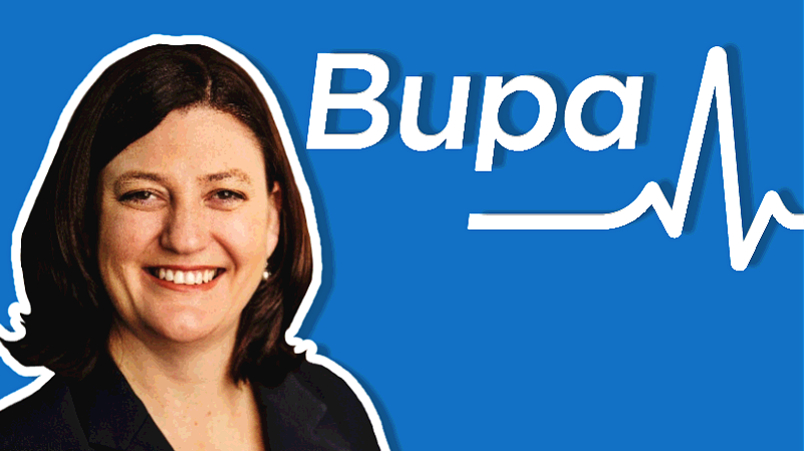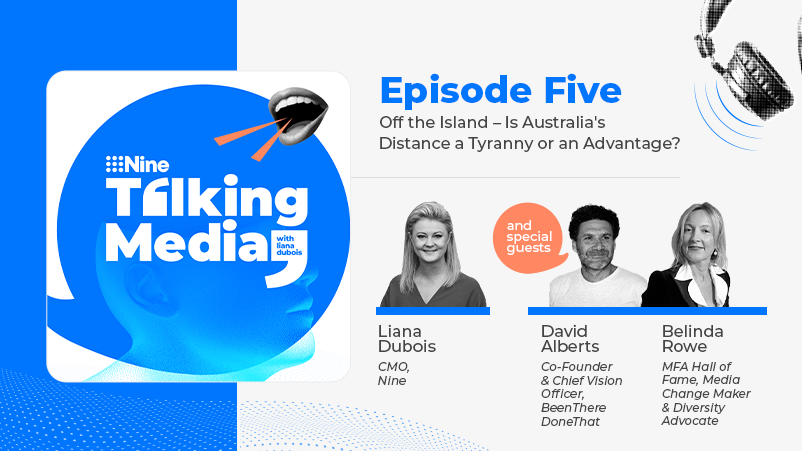'30% uplift in customer response rates': BUPA's AI-powered decision engine delivering huge early NPS scores, $12m incremental revenue gains, $1m in cost out

Lisa Dickson, Head of Marketing Automation, BUPA shares the early success metrics. Content management the next big focus
The health insurance giant BUPA is landing strong early returns from a new round of investments in machine-led real time decisioning, and the kinds of NPS scores most brands dream of — To boot, the insurer is posting strong incremental revenues and cost savings so far topping $1m. But there's plenty of gains left to be made, says BUPA's Head of Marketing Automation, Lisa Dickson, by tackling 11 "micro-moments of basic health insurance hygiene" identified in its global research from HQ in the UK. Bupa is also investing in a customer data platform (CDP) but Dickson is cautious on when real time data adds real value - or fuels too much complexity.
What you need to know
- BUPA is seeing a fast path to value from tech investments, deploying an AI-powered decisioning engine that's delivered strong incremental revenue growth, cost savings of circa $1m, a 50 per cent uplift in efficiencies and a 30 per cent improvement in customer responsiveness.
- Pega decisioning engine and Tealium CDP combine as BUPA's platform core.
- The initial Pega implementation only integrated with Adobe Campaign to deliver a relatively small number of email and SMS communications. This second tranche of work kicked off in the middle of 2022.
- Annualised incremental revenue gains on track to crack over $10m in first year from the three early use cases.
- Huge net promoter score (NPS) results from early trials, including a 50+ NPS for a personalised sales path.
- Customer data platform overcomes the 24 hour "batch data delay" but big data platform remains because overloading a CDP can lead to failure, says Head of Marketing Automation lead Lisa Dickson.
- Content strategy next on priority list, bringing in-house; proof of concept under way.
“We are in the very early moments of the journey. If we look at just the first six months, we're seeing things like a 50 per cent uplift in delivery efficiency. We've already saved a million dollars in partnership savings —and things like content development. And we’ve seen a 30 per cent uplift in our customer response rates."
Barely six months into the implementation of new program of works built on its AI powered decisioning engine, insurance giant BUPA has seen a 50 per cent delivery efficiency uplift, a 30 per cent increase in customer responses, and banked a million dollars in partnership spend savings.
And if current trends continue, three early uses cases look set to deliver incremental annualised revenues in excess of $10m.
Speaking to Mi3 at last week's Pegaworld event in Las Vegas, Lisa Dickson, Head of Marketing Automation, BUPA said the first three uses cases are on track to deliver strong incremental revenue growth, along with very impressive early NPS scores.
The three initial BUPA use cases and results include;
- Personalised sales pathway: On track for a $5m annualised incremental revenue gain and a 50+ NPS
- Personalised referrals: On track for a $2m annualised incremental revenue gain and a 20+ NPS
- Personalised hospital recovery: On track for a $4m annualised incremental revenue gain and a 50+ NPS
“Our motto is about helping customers to live longer, happier, healthier lives. It sort of spells win/win,” she told MI3.
“The healthier you are, the less money we have to spend paying out in your claims. As Australians, we're not very good at looking after our health. We know that we've got a bit of a ‘she’ll be right’ attitude."
For that reason BUPA is getting more involved in practical health. “We are a health care organisation. From the outside-in healthcare company, but in, it’s an insurance company with ancillary offerings and so our business models are shifting and very recently towards a more proactive kind of health care management.”
For consumers, navigating the information on insurance websites can be daunting, she suggests. “You feel like you have to have a medical degree just to navigate the products and the terms and conditions and the details about the extras that you can choose from. You can feel like it just a trick, and you're getting set up because there's just so much information.”
Dickson and the BUPA team want to change that. “We have an ambition of becoming the world's most customer centric healthcare provider. And in my team, in particular, we have a mantra that talks about becoming not just the customer centric, but we believe that health is a really personal topic. It doesn't always feel like that. We are really trying to make it feel like that more of a conversation,” she says.
Part of demonstrating that commitment to customers involved cold hard cash. BUPA gave money back to its customers during the pandemic to reflect the reality that many of the costs its needed to cover – such as elective surgery were effectively off the table.
Another key element – recognising the need to do more than talk the talk.
“When I on-boarded into the organisation, the first thing that was said to me was, ‘We run a pretty tight ship, it’s a a good business but customer sentiment doesn't always align to that.”
The company wanted to understand why that was and how it could do better. “Because if we don't do better, it's going to be a pretty short-lived strategy and basically someone's going to come along and own that space.”
The first question it needed to ask was how Bupa builds hat relationship, which lead to an uncomfortable realisation. “Actually, we didn't have a relationship with all of our customers. Pretty much the only people we spoke with were the people who paid the bill.”
Micro-moments
The company CEO Iñaki Ereño commissioned global research to better understand the deal breakers. “It’s the basic hygiene we needed to get right in order to have permission to play if we want to evolve out business model.”
That work identified what Dickson describes as 22 micro-moments, which, in the Australian context were laddered down into the local market.
There were some issues in particular that resonated in the Australian market, Dickson said, “Claims just have to be easy. Payments need to work. Yell me when it's not going to work, so I can fix it before it goes wrong — don't tell me that I've missed a payment, and then I can't get a claim. It’s basic things like that. But it's also ‘I want to feel rewarded.’ If I’ve been a member since I was born what am I getting that's different to someone who joined yesterday?”
It is important to understand the context of these sentiments across a person’s digital life, she said.
“I'm not just comparing to other healthcare providers, I'm comparing to Spotify and Google, and great customer experience in other industries. We can see those demands starting to ladder down into Health, and honestly, health as an industry is behind.”
The local BUPA team focused in on the top 11 micro-moments.
“We’ve done a lot of work on that in the last 18 months and where we are now is really looking for our signature moments. That's a space we're starting to play.
“We are in the very early moments of the journey. If we look at just the first six months, we're seeing things like a 50 per cent uplift in delivery efficiency. We've already saved a million dollars in partnership savings —and things like content development." While that saving is not directly sourced to the decisioning engine it is it still attributable to it, she says. "And we’ve seen a 30 per cent uplift in our customer response rates. It could be we're asking you to purchase a product, or it could be we're asking you to fill out a survey. It depends on the ask, but it's basically a 30 per cent response in whatever the ask is.
“We have also had an almost a 1 per cent improvement in terms of customers allowing us to stay connected with them.”
The decisioning engine also enabled BUPA to outperform its industry peers in areas such as responding to shopping cart abandonment.
“We are retargeting people who abandon their shopping cart experience, and we add tailored messages through that experience. We know if you used to be a customer versus somebody that’s new versus someone that's switching from a different provider. We will know all of that. And then we can tailor messages accordingly. Industry tells us benchmark wise, you typically get about a 10 per cent response rate and we are currently getting 16 per cent.”
You don't need everything in real-time, so you can reduce the strain on the system. Because, again, this is my third organisation working with Pega, I've seen where you overload the CDP it typically almost fails, and everything blows up. We certainly don't want to land there.
Like many brands BUPA is also trying to develop as close to a 360 degree omnichannel view of the customer as possible.
According to Dickson, “Today, we have directly integrated to Pega, and all of our outbound channels and we are about to launch in the digital space. Later in the year, we will start to bring online our assisted channels such as contact centres, and chat because we have retail presence as well.”
BUPA is Dickon's third experience with the decisioning engine, having been involved with implementations at Optus and AGL in the past, and she makes a point of noting that a tool is just a tool without data.
To that end, much of the last 12 to 18 months has been spent lining up all of the back-end infrastructure, she says.
“Whilst we might not be pushing messages out through all of our digital channels right now, we certainly know what goes on there. When you get an email from us, or you get a phone call from us, we know what you're doing online, we know what products you've been looking at and we can make decisions about how we might tailor a certain conversations with you.”
Just as importantly it means the company can make decisions about when not to contact someone.
“And we can also make decisions about when not to contact you. We might have modelled you are prime candidate for cross sell but that morning, you called in with a complaint. It's probably not a good time to try and activate that [offer] so we will be able to activate a stop until your issue is resolved.”
Customer Data Platform
Of course, no system, operates in isolation. BUPA is a Microsoft CRM shop, also has some Salesforce capability, and uses Adobe Campaign for outbound activity.
More recently, it invested in a Tealium customer data platform (CDP) as a way of improving the immediacy of its customers’ experiences.
When Dickson first arrived at BUPA in the beginning of 2022, the organisation was using a big data platform and sourcing all of its customer data overnight in a 24 hour batch run.
“And if we were continuing to just do outbound email campaigns, that's probably fine. But the minute you're on a contact centre or online, you need an immediate response,“ she said.
“That’s why we brought Tealium in, so we can get the real time data feed. You don't store information in Tealium so you still have you figure out, what you want to source from where, but we are going to be using more and more of the CDP although we will still have both.”
The reason for maintaining both the traditional big data system and a CDP is that real time capabilities are not required for all use cases. It is a lesson Dickson has learned the hard way from previous implementations.
“You don't need everything in real-time, so you can reduce the strain on the system. Because, again, this is my third organisation working with Pega, I've seen where you overload the CDP it typically almost fails, and everything blows up. We certainly don't want to land there.”
There was also another reason for the CDP. “Until February this year, we were only communicating through Pega for customer communications whereas we have also brought in our prospect data. What we now have is a much broader 360 view of the population. So we can see who's not a customer, who used to be a customer, who is a customer, We’ve got a holistic view.”
While it is early days, the impact of integrating the CDP with the decisioning engine is already being felt. “The 16 percent uplift on abandoned cart (recovery) came out of that integration.”
“And Optical revenues doubled out of the initiatives that we did there.”
What’s next
Up next, three new initiatives are planned for the Bupa.com web site.
The first is cross sell which looks at different types of insurance. Next is an extension of recommendations. “It’s actually taking that step further and saying, ‘We know that's the right one for you based on what you've told us.”
“And then the third is our Quote-Save-Retrieve process. There are lots of quotes sitting on our website that people have saved, and are not doing anything [about], where we can start to do follow up.”
“The jury's out a little bit on the results because we haven't launched that yet. That'll launch next month.”
The business is currently in the process of unwinding outsourced content creation and management relationships and instead, bringing a lot of this work in house. For instance it is working with SmartComm in the UK, which describes itself as a next generation customer communications management platform - on a proof of concept. And BUPA may also review it’s approach to outbound campaigns going forward, she told MI3.
Despite the early wins, there’s still plenty more left to do on Dickson’s to do list.



